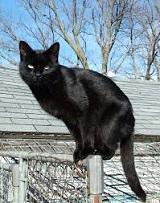
Professional breeders limit cat types to 41 - the official number of breeds - but to the average person, the definition of type has different connotations. Generally, cats are lovable pets that can adjust to any family, given their preservation instinct, while keeping their own personality. They are intelligent animals, perfectly capable of maintaining an equally rewarding relationship with humans, so whether they are of a certain breed or just stray, people of any age can get to love them.
As long as they live next to humans, cats are defined as domestic. It is said: "like master, like pet", and that does not always refer to a statute in society, but more likely hints to physical features, body movement, personality traits etc., that unwittingly bring together people and animals alike. Thus, for all cat types, there are human types.
According to similarities in their physical traits, cat breeds can be grouped in several categories
* The Oriental type is characterized by a slender body, and a long, triangular head, large ears, almond-shaped eyes, long nose, tail and legs. Some breeds that belong to this type are the Siamese, the Balinese and the Oriental Shorthair;
* The cats belonging to the Foreign type are more athletic, have long tails, legs and large ears. This category includes breeds like: the Turkish Angora, the Russian Blue and the Abyssinian cat;
* The Semi-Foreign type, which includes breeds like the Devon Rex, the Egyptian Mau and the Sphynx is recognizable by their medium body conformation, less slender than the Foreign type;
* The Semi-Cobby is represented by the American Shorthair, the British Shorthair, the Scottish Fold, which have stocky body, round head and short legs;
* Cobby types of cats are short, muscular, have short legs and tails and are represented by breeds such as: Persian, Manx, Burmese etc.
These are only a few examples; the list of cat types can go on. Perhaps a more personal approach will classify cats as very different in terms of personality. Some are more sociable, some more naughty, some servile, some love to be pampered, while others do not, some are more calm, others more dynamic, some love to eat much, some are just picky.
Leaving aside all the above, no matter the personality traits specific to a certain breed, there still are changes that may occur in the cat's behavior and it is up to the owner to detect them and try to determine the cause. For example, if your cat becomes agitated out of the blue, this probably means that it has to be taken to the veterinarian, as it usually is a sign of illness.
However, even though it may seem quite difficult to properly take care of your feline friend, the rewards owning a cat can bring are truly worth it. And with the multitude of cat types out there, it is impossible not to find a furry companion to suit you best and to brighten up your life.




